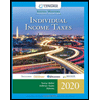
Loose-leaf For Auditing & Assurance Services: A Systematic Approach
11th Edition
ISBN: 9781260687637
Author: William F Messier Jr, Steven M Glover Associate Professor, Douglas F Prawitt Associate Professor
Publisher: McGraw-Hill Education
expand_more
expand_more
format_list_bulleted
Question
Chapter 17, Problem 17.3RQ
To determine
Concept Introduction:
Commitments are the promises or indemnity made by the company for specified circumstances. There are provisions required for the commitments which require payment of obligation. The auditor checks these commitments and provisions made.
To indicate: Two examples of commitments and when they result in decrease in other comprehensive income.
Expert Solution & Answer
Want to see the full answer?
Check out a sample textbook solution
Students have asked these similar questions
Your firm is contemplating the purchase of a new $610,000 computer-based order entry system. The system will be depreciated
straight-line to zero over its five-year life. It will be worth $66,000 at the end of that time. You will save $240,000 before taxes per year
in order processing costs, and you will be able to reduce working capital by $81,000 (this is a one-time reduction). If the tax rate is 21
percent, what is the IRR for this project?
Note: Do not round intermediate calculations and enter your answer as a percent rounded to 2 decimal places, e.g., 32.16.
IRR
%
QUESTION 1
Examine the information provided below and answer the following question.
(10 MARKS)
The hockey stick model of start-up financing, illustrated by the diagram below, has received a lot of attention in the
entrepreneurial finance literature (Cumming & Johan, 2013; Kaplan & Strömberg, 2014; Gompers & Lerner, 2020). The model
is often used to describe the typical funding and growth trajectory of many startups. The model emphasizes three main
stages, each of which reflects a different phase of growth, risk, and funding expectations.
Entrepreneur, 3 F's
Debt(banks & microfinance)
Research Business angels/Angel Venture funds/Venture capitalists
Merger, Acquisition
Grants
investors
PO
Public market
Growth (revenue)
Break even
point
Pide
1st round
Expansion
2nd round
3rd round
Research
commercial idea
Pre-seed
Initial concept
Seed
Early
Expansion
Financial stage
Late
IPO
Inception and
prototype
Figure 1. The hockey stick model of start-up financing (Lasrado & Lugmayr, 2013)
REQUIRED:…
critically discuss the hockey stick model of a start-up financing. In your response, explain the model and discibe its three main stages, highlighting the key characteristics of each stage in terms of growth, risk, and funding expectations.
Chapter 17 Solutions
Loose-leaf For Auditing & Assurance Services: A Systematic Approach
Ch. 17 - Prob. 17.1RQCh. 17 - Prob. 17.2RQCh. 17 - Prob. 17.3RQCh. 17 - Prob. 17.4RQCh. 17 - Prob. 17.5RQCh. 17 - Prob. 17.6RQCh. 17 - Prob. 17.7RQCh. 17 - Prob. 17.8RQCh. 17 - Prob. 17.9RQCh. 17 - Prob. 17.10RQ
Ch. 17 - Prob. 17.11RQCh. 17 - Prob. 17.12RQCh. 17 - Prob. 17.13MCQCh. 17 - Prob. 17.14MCQCh. 17 - Prob. 17.15MCQCh. 17 - Prob. 17.16MCQCh. 17 - Prob. 17.17MCQCh. 17 - Prob. 17.18MCQCh. 17 - Prob. 17.19MCQCh. 17 - Prob. 17.20MCQCh. 17 - Prob. 17.21MCQCh. 17 - Prob. 17.22PCh. 17 - Prob. 17.23PCh. 17 - Prob. 17.24PCh. 17 - Prob. 17.25PCh. 17 - Prob. 17.26PCh. 17 - Prob. 17.27PCh. 17 - Prob. 17.28P
Knowledge Booster
Similar questions
- What is the finance ? tell about its significant.arrow_forwardTake value of 1.01^-36=0.699 . step by steparrow_forwardsolve this question.Pat and Chris have identical interest-bearing bank accounts that pay them $15 interest per year. Pat leaves the $15 in the account each year, while Chris takes the $15 home to a jar and never spends any of it. After five years, who has more money?arrow_forward
arrow_back_ios
SEE MORE QUESTIONS
arrow_forward_ios
Recommended textbooks for you
 Managerial Accounting: The Cornerstone of Busines...AccountingISBN:9781337115773Author:Maryanne M. Mowen, Don R. Hansen, Dan L. HeitgerPublisher:Cengage Learning
Managerial Accounting: The Cornerstone of Busines...AccountingISBN:9781337115773Author:Maryanne M. Mowen, Don R. Hansen, Dan L. HeitgerPublisher:Cengage Learning Financial Reporting, Financial Statement Analysis...FinanceISBN:9781285190907Author:James M. Wahlen, Stephen P. Baginski, Mark BradshawPublisher:Cengage Learning
Financial Reporting, Financial Statement Analysis...FinanceISBN:9781285190907Author:James M. Wahlen, Stephen P. Baginski, Mark BradshawPublisher:Cengage Learning Individual Income TaxesAccountingISBN:9780357109731Author:HoffmanPublisher:CENGAGE LEARNING - CONSIGNMENT
Individual Income TaxesAccountingISBN:9780357109731Author:HoffmanPublisher:CENGAGE LEARNING - CONSIGNMENT

Managerial Accounting: The Cornerstone of Busines...
Accounting
ISBN:9781337115773
Author:Maryanne M. Mowen, Don R. Hansen, Dan L. Heitger
Publisher:Cengage Learning

Financial Reporting, Financial Statement Analysis...
Finance
ISBN:9781285190907
Author:James M. Wahlen, Stephen P. Baginski, Mark Bradshaw
Publisher:Cengage Learning

Individual Income Taxes
Accounting
ISBN:9780357109731
Author:Hoffman
Publisher:CENGAGE LEARNING - CONSIGNMENT


